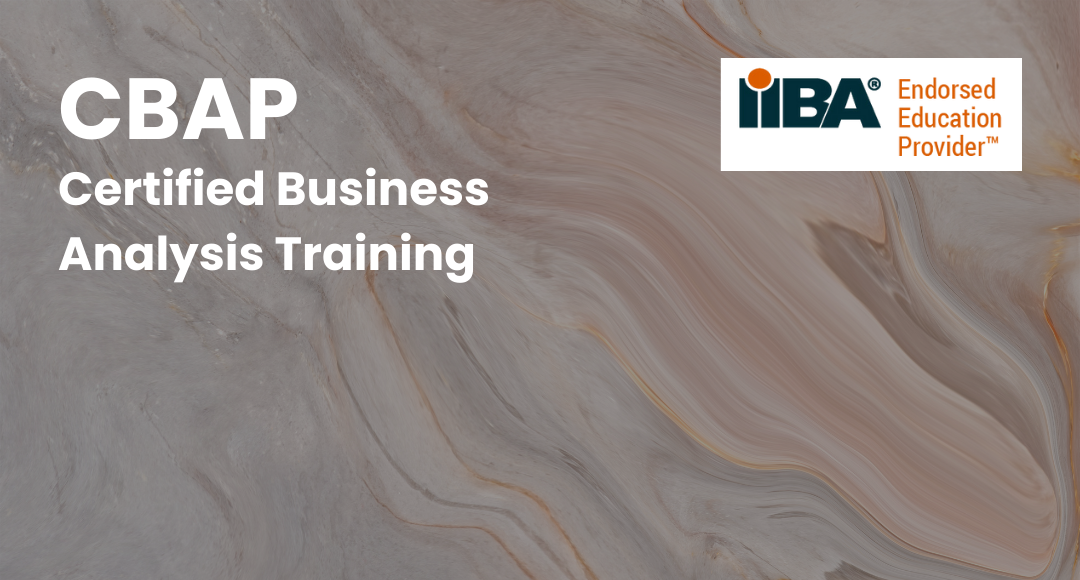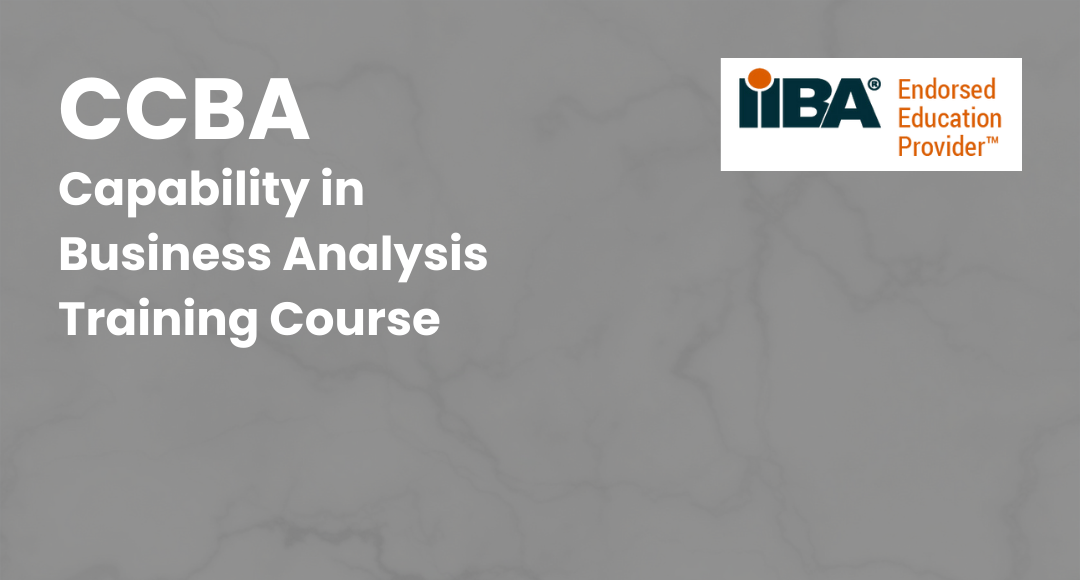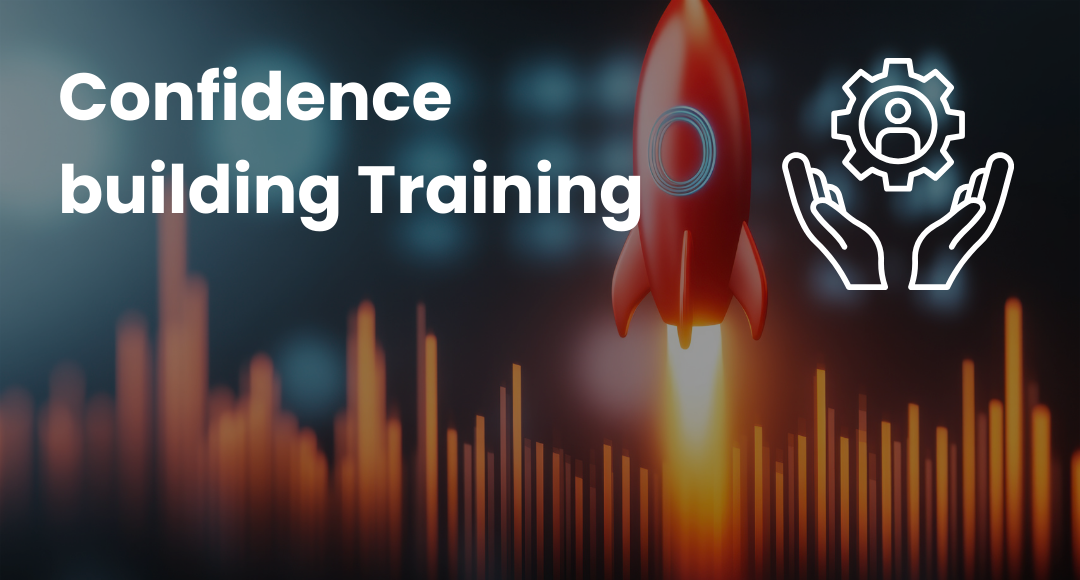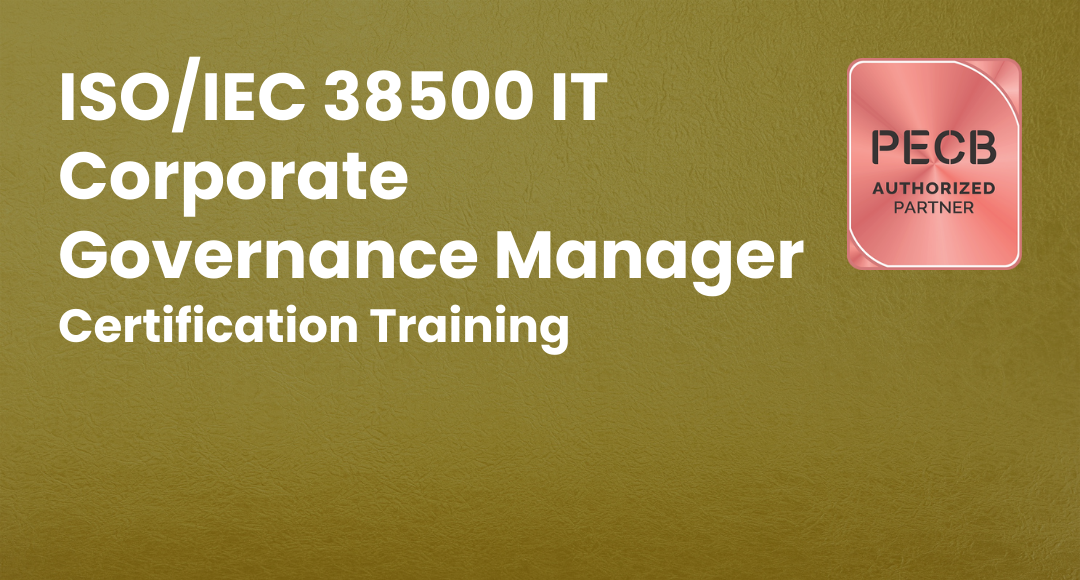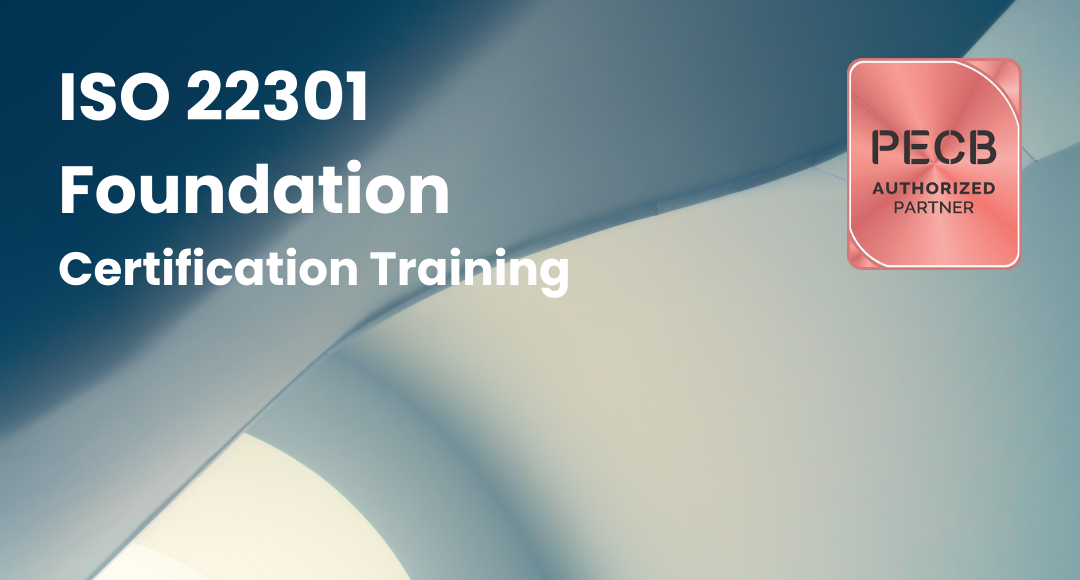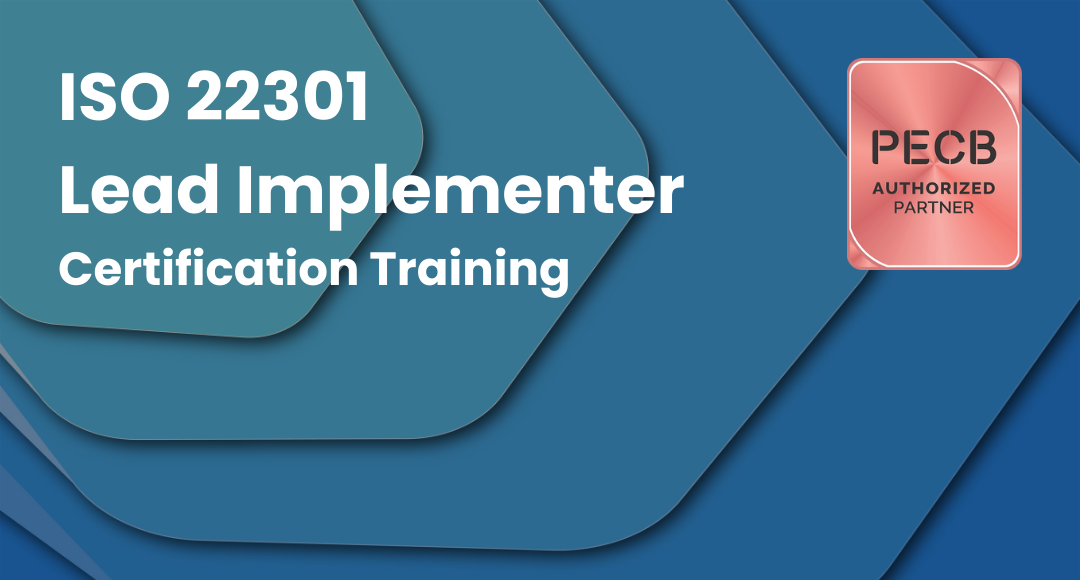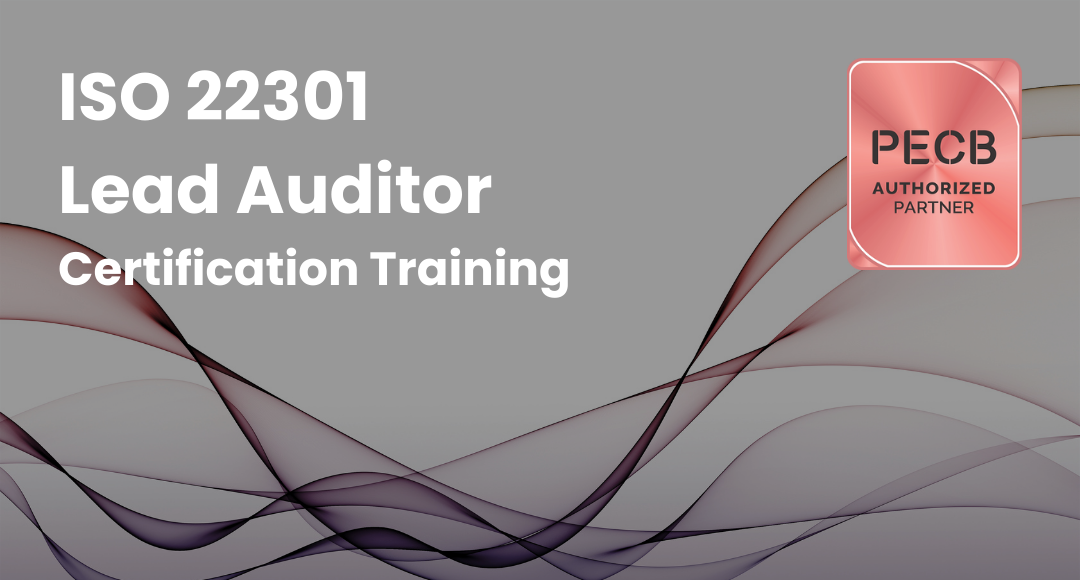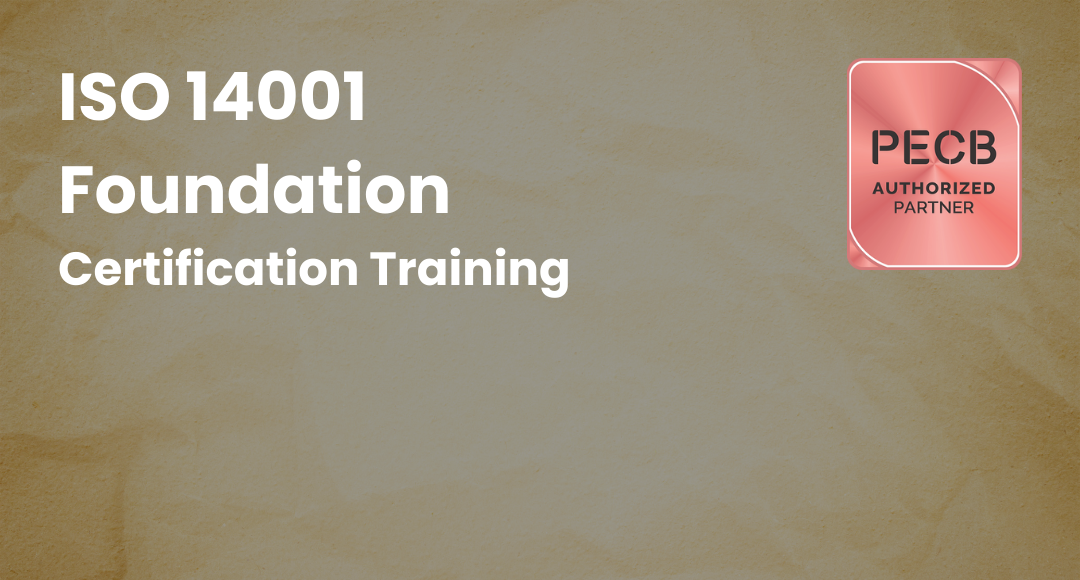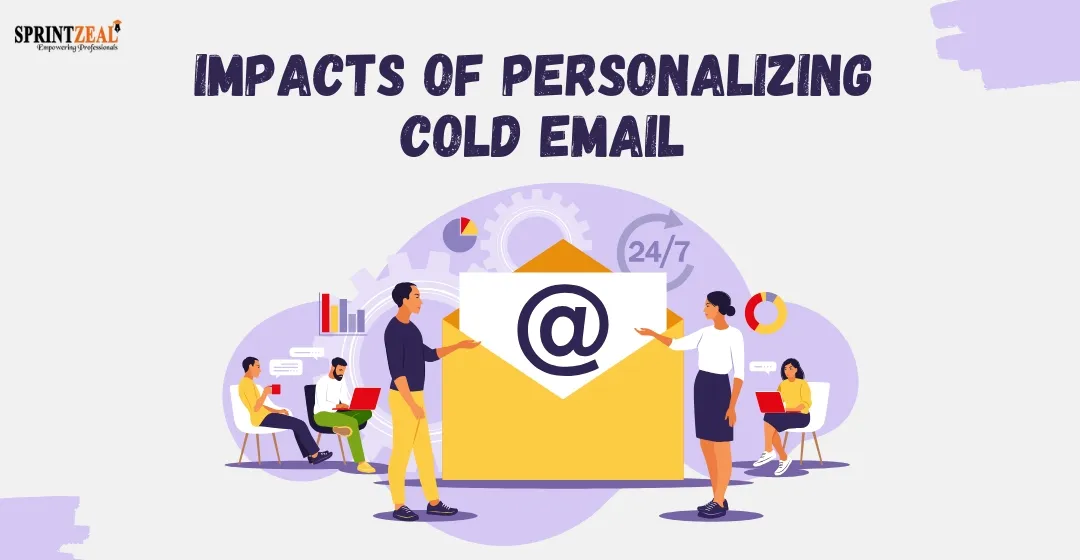Top Salesforce Interview Questions and Answers 2026
-
 By Irfan Syed
By Irfan Syed - Published on 12 Oct 2023

Table of Contents
- Most Popular Salesforce Interview Questions and Answers
- Updated List of Salesforce Interview Questions and Answers
- Salesforce Interview Questions and Answers for Freshers
- Salesforce Interview Questions and Answers for Experienced
- Salesforce Technical Interview Questions and Answers
- Salesforce Interview Questions for Salesforce Admin
- Salesforce Interview Questions for Salesforce Developer
- Salesforce Interview Questions for Salesforce Integration
- Salesforce Interview Questions for Salesforce Triggers
- Salesforce Interview Questions for Salesforce Lightning
- Conclusion
- Frequently Asked Questions
Most Popular Salesforce Interview Questions and Answers
Salesforce is a very important part for most of the professional-looking forward to keeping a big step into the world of global Business.
However many experts consider the Salesforce interview to be a difficult one for which the candidate needs to thoroughly understand Salesforce interview questions and answers to interview and get a job with less time consumed.
This is unquestionably the situation with Salesforce, the mightiest Customer Relationship Management (CRM) administration on the planet. Every organization wants to have an improvised relationship with the customers and other clients that are related to the company.
While managing better public relations has been a great task for many competitions, it has also been equally challenging. This is a major reason why organizations have taken partnerships with Salesforce organization which allows the public relations of the company to be much stronger to have a better impact on the market.
Public relationships are truly very important for every organization. Because of the high demand for Salesforce, many professionals desire to step into the field, and they also advise understanding sample Salesforce interview questions and answers to make the process of getting a job much more convenient.
Updated List of Salesforce Interview Questions and Answers
Here is a list of the latest Salesforce interview questions and answers:
1) What do you understand by governor limits in Salesforce?
As we have understood Salesforce is based upon the concept of multi-tenant architecture, by which we understand that it was used as a single database for storing the data and information for various customers.
Governor limited actual scale of data or records that can be stored in the shared database is provided by Salesforce. Governor limit came into existence to ensure that no customers actually monopolies any kind of resources that are being shared with them.
There are different kinds of governor limits used in Salesforce, which are known as pre-transaction Apex limits, force.com platform Apex limits, static Apex limits, size-specific Apex limits, email limits, and push notifications limits.
2) Can we define why the visual force pages are always served from a different domain?
While using Salesforce, it is always seen that different types of visual forces are served from different domains.
This is done that improve the security standards of the sales force and also block any risk of cross-site scripting.
When the visual forces are obtained from a different domain, the risk of cross-site scripting is reduced by a great margin which makes it more practical and beneficial with the usage of visual force pages.
3) What is the Trigger?
The Trigger is the code that is executed previously or after the record is refreshed or embedded.
4) How do we differentiate between a trigger and a workflow?
Most of the work in the sales force is pin the computerized Manda, and this entire process is called a computerized cycle. workflow actually roper monitorization of several aspects meaning in the sales force at a particular time, whereas Trigger helps in the generation, of course, which usually comes into action after a particular record is refreshed.

5) Is there a breaking point for data.com records?
There is a breaking point for data.com records while using Salesforce. This helps the clients related to Salesforce in observing the cutoff structure with great detail by essentially clicking on the right link.
There is a specialized client area that helps in a proper understanding of the trade that has been performed in the month, which is stored in the records.
6) Is it conceivable to plan a dynamic dashboard in Salesforce?
In Salesforce, it is unimaginable to expect to plan a dynamic dashboard.
7) What do you understand by stand box, and what are the different types of the sandbox in Salesforce?
A lot of organizations require certain modifications. However it is very tough for an organization to understand what changes or modifications to your organization require. A sandbox is an application of the entire production environment or a complete application of an organization.
It provides a proper study of the organization without disturbing the production work in the company.
A lot of organizations use sandbox when they are testing a completely new application that is produced in the organization to check Ho practical the software is and how it will benefit the users.
There are four types of sandboxes in Salesforce, which are known as a saleforce developer, developer Pro, partial copy, and full copy.
8) What is Salesforce?
Salesforce is the best Customer Relationship Management (CRM) item conveyed to endorsers as a practical programming as-a-administration (SaaS).
9) Why do different writing-sharing rules exist?
The primary goal of so many sharing rules in Salesforce give edit access to organizations and professionals Quora part of Salesforce.
It can also work as public read-only access for different people from Salesforce to read all the writings.
Every profession that is a part of Salesforce by default has access to sharing tools whether they are public read-only or private.
10) What is the sharing principle?
The sharing principles are applied when a client wishes to permit admittance to different clients.
11) Name all the different types of reports that are available in Salesforce. Can all the reports be deleted in mass in Salesforce?
When we talk about different types of data in Salesforce, we get to know that there are primarily three types of reports that are available on Salesforce. The first one is known as a summary report.
The summary report is very similar to different kinds of tabular reports, but the summer report has better functionality for grouping rows and viewing the subtotals. Summary reports also work in creating different types of charts on Salesforce.
The second type is a matrix report. Ab Matrix report is a two-dimensional report. It allows a user to different group kinds of data in the form of rows and columns. The third type of report in Salesforce is a joined report. A joint report is a compilation of multiple blocks that reflect various data from various reports.
The last one is tabular reports which include simple Excel-type tables. Another feature of different reports in Salesforce is that the summary report and matrix report can also be used as the data source for different types of dashboards.

12) Can you summarize the entire master-detail relationship?
The biggest and the easiest example to understand was a master-detail relationship when taking the example of a parent and a child.
The relationship of master detail is similar to a parent detail where there are one master object and many dependent objects. Just like in a parent-child relationship, the child is completely dependent on the parents.
Dear, all the dependent objects are completely dependent on the master object. The master-detail relationship has a lot more prioritization when it comes to detailed records.
All the details of the cause of the master-detail relationship are directly or indirectly related to the master's object. The master-detail relationship primarily consists of four major calculations that can perform a roll-up summary field.
It helps in the calculation of the total number of detailed records which are completed in a day to the master record. It is used to calculate the sum, minimum, and maximum values.
13) Name all the different types of object relations in Salesforce and how they can be created?
The relationship between objects. It is well as the primary or one of the most important parts of Salesforce, which is used to establish various links between two or more objects.
There are three kinds of object relations in Salesforce.
- The first one is a master-detail relationship. The master-detail relationship is more like a parent-child relationship. In the master-detail relationship, the master object controls the entire behavior of the child object in the entire scene.
In the master-detail relationship, there is only one master object but many junior or child objects. Every record must have a master object as the role of the master object is to bring together all the different kinds of independent or 0 objects under a particular group.
The master object is so important that if the master object of a particular field is deleted, the entire group will also be deleted. This message is known as a cascade delete. All the dependent fields carry certain trees of the master object to inform of the sharing or security settings.
- The second one is a lookup relationship. A lookup relationship is used when it still has to create a link between two different objects without any requirement or help from the parent object.
- The third one is known as a junction relationship which is a many-to-many kind of relationship.
Here in the name of a master of the object, there can be more than one master object, but there are many dependent objects.
Combine three or more custom objects altogether. What are the various kinds of item relations in Salesforce? How might you make them?
No rundown of Salesforce inquiries questions is finished without including connections between objects in Salesforce. Connections in Salesforce can be utilized to build up connections between at least two items.
The various kinds of article connections in Salesforce are:
Expert Detail Relationship (1: n):
It is a parent-youngster relationship in which the expert article controls the conduct of the needy kid object.
If a record/field in the expert item is erased, the reliant article's comparing fields are additionally erased.
This criterion is also known as course erase. It helps the user in the characterization of several detailed connections. this includes several custom articles on custom items and numerous standard articles or standard items
Query Relationship (1: n):
Query connections are utilized when you need to connect two articles without relying on the parent object.
Among the different relationships that are present in Salesforce, the master-detail relationship is the most superior and most important. We can relate the master-detail relationship to the relationship of a single parent and a child.
The child would be under the constant influence of several other people that whom he would be interacting within his entire lifetime. The force of control of the parents is still influential, but it is not completely contracting as it does not have a proper eraser of the child object query.
In short, we can also term it as Also security portal where the control over the access is still restricted to certain formats.
Intersection Relationship (Many-To-Many):
The many relationships, which are also known as the intersection relationship, are a very important part of the sales force. This is the real export connection that helps retailers connect with the usage of several custom items.
There are at least two items that are dealt with between the retailers. As an example, we can consider that an ambitious child actually into several expert items and functions to fulfill the requirements to achieve those goals.
14) What ends up itemizing a record when an expert record is erased? What befalls the youngster’s record when a parent’s record is erased?
When an expert record is erased in a Master-Detail relationship, the detail record is erased naturally (Cascade erase).
15) Would you be able to move up the rundown field if there should arise a Master-Detail relationship?
Truly. We notice that there is a constant requirement of export detail relationship for which there is a feature of moving up and down. Accessing export records is very difficult, but the usage of the move-up run-down shows the incentive in the cords in a better-detailed manner.
In other items, you can also consider that this feature helps in filtering down different forms of data and provides the user with the required data. The detail record should be identified with the expert through an expert detail relationship.
The utilization of a supporter code in a proper way can help the user in telling the numbers with detailed records with much more convenience. This makes analyzation of data much more convenient and beneficial for the user.
16) What do we mean by a skinny table in Salesforce, and what are the considerations for a skinny table?
A skinny table is a tool that is used in Salesforce, which helps in dealing with records and files that are frequently accessed.
The primary goal of different kinds of joins can create a lot of trouble for users of Salesforce. The usage of schema tables has the potential to boost performance by a large margin.
It is very effective even if the source tables are modified. The skinny tables easily sync with source tables without any issue. There are three major considerations for a skinny table, as the skinny table can contain 100 columns at best. Objects from any other field cannot be used in skin eatables.
Skinny tables have a great connection with sandboxes as they are directly linked. Skinny tables are instrumental in having a seamless operation. This is because skinny tables give the option to instantly bring up frequently accessed records.
17) What are the contemplations for Skinny Table?
In Salesforce, skinny tables are utilized to get to as often as possible utilized fields and keep away from joins. This generally improves execution. Contemplations for skinny tables:
- Thin tables can contain a limit of 100 sections.
- Thin tables can't contain fields from different items.
18) Which fields are consequently Indexed in Salesforce?
Just the accompanying fields are naturally listed in Salesforce:
- Essential keys (Id, Name, and Owner fields).
- Unfamiliar keys (query or expert detail relationship fields).
- Review dates (for example, SystemModStamp).
- Custom fields are set apart as an External ID or an interesting field.
19) What are the reasons for which there is essential liberty to compose test classes?
Programming engineers worldwide will consistently concur that composing code in test classes makes investigating more proficient.
20) For which rules in the work process, "time subordinate work process activity", can't be made?
Time subordinate work process activity can't make for: "made, and each time it's altered".
21) What do we mean by external ID in Salesforce?
An external ID is a kind of custom field which helps in providing a professional with a unique Identity in a record. External ID in Salesforce is recognized as professional proof whose primary task is to import different kinds of records.
But it is very important to understand that only custom fields can be used as external IDs in Salesforce.
22) What are custom marks in Salesforce? What is the character’s furthest reaching of the custom mark?
Custom names are custom content qualities that can be gotten from Apex classes or Visualforce pages. The qualities here can be converted into any language upheld by Salesforce.
Their advantage is that they empower engineers to make multilingual applications that naturally present data in a client's local language. You can make up to 5,000 custom names for your association, and they can be up to 1,000 characters long.
23) What is the distinction between a Role and Profile in Salesforce?
As referenced in one of the past Salesforce inquiries questions, a profile will eventually control admittance to which records a client has in a Salesforce organization.
No client can chip away at the Salesforce organization without being allocated a profile. The Profile is hence obligatory for each client. Job anyway isn't compulsory for each client.
The essential capacity of the Role/Role order is that it permits more significant level clients in the progressive system to gain admittance to records claimed by lower-level clients in the chain of command.
An illustration of that is Sales Managers gaining admittance to records possessed by Sales.
Salesforce Interview Questions and Answers for Freshers
Below are the Salesforce interview questions and answers for entry-level or beginners:
1) What is Salesforce, and how does it work?
Salesforce is a cloud-based CRM platform that helps businesses manage customer relationships and streamline operations. It works by storing data in the cloud, making it accessible from anywhere.
What is the significance of a lead in Salesforce?
In Salesforce, a lead represents a potential customer or prospect. It's the initial stage in the sales process, where you collect information about individuals or companies who have shown interest in your product or service.
How can you create a custom object in Salesforce?
To create a custom object in Salesforce, go to Setup, then select Objects and Fields. Choose Object Manager and click "Create Custom Object." Define the object's properties and fields to tailor it to your specific business needs.
Explain the difference between a workflow rule and a process builder in Salesforce.
A workflow rule is used for automating standard internal procedures, while the Process Builder is more versatile and handles more complex tasks. Process Builder can update related records and perform multiple actions in one go.
What is a Salesforce sandbox, and why is it important?
A Salesforce sandbox is a copy of your production environment used for testing and development. It's crucial as it allows developers and admins to make changes, test new features, and ensure that updates won't disrupt the live system.
How do you prevent data loss in Salesforce?
Data loss can be prevented in Salesforce by regular backups, utilizing Salesforce's data recovery service, and implementing robust data security measures, including user access controls and data encryption.
What is the contrast between Force.com and Salesforce.com?
We can say that Force.com is Platform-as-a-Service (PaaS), while Salesforce.com is Software-as-a-Service (SaaS).
Mention the instances from the non-deterministic force?
Before I notice a portion of the models, let me give you a prologue to deterministic and non-deterministic recipe fields.
While equations handle who’s worth will be changed progressively or whose qualities should be determined on the fly, they are alluded to as non-deterministic recipe fields.
An exemplary illustration of that is an equation restoring the current date and time.
What do you understand by word and what?
There are different kinds of activities that function in Salesforce to keep track of different organizations in showing their connection with objects and people.
The basic definition of who is referred to as the connection with the people, and what is related to the activities or connection, which is related to different objects.
Salesforce Interview Questions and Answers for Experienced
Here are the Salesforce interview questions along with answers for experienced professionals:
What is Governor Limit in Salesforce, and why is it important?
Governor Limits are runtime limits set by Salesforce to ensure efficient resource utilization. They prevent users from monopolizing shared resources and help maintain system performance and reliability.
How can you improve the performance of a Visualforce page in Salesforce?
To enhance Visualforce page performance, optimize queries, reduce the use of controllers, and use pagination to limit the number of records displayed on a single page. Utilize caching where appropriate.
Explain the difference between a trigger and a workflow rule in Salesforce.
Triggers are Apex code that execute before or after specific events, offering more complex logic and customization. Workflow rules are declarative and limited in functionality compared to triggers.
What is the Salesforce Lightning framework, and how does it differ from Classic?
Salesforce Lightning is a modern UI framework designed for enhanced user experience. It offers a responsive design, improved performance, and a more intuitive interface compared to Classic.
What is the purpose of Salesforce Communities, and how can they benefit businesses?
Salesforce Communities enable businesses to create customized, branded spaces for interaction with customers, partners, or employees. They enhance collaboration, self-service support, and engagement.
How can you handle data migration in Salesforce, especially when moving data from an external system?
Data migration in Salesforce involves data mapping, cleansing, and using data loaders or integration tools like Salesforce's Data Import Wizard or third-party solutions to ensure a smooth transition while preserving data integrity.
What are the diverse information types that a common field record name can have?
There is numerous inform type that comes under sale. Mother is a restriction in the field values in Salesforce, which is 80 burns.
This indicates that the common field record name can act ease their auto numbers or text field numbers limited to only 80 burns.
Winter causes of the creation of auto numbers are actually.
Sr No- {1}
Sr No- {2}
Sr No- {3}
Salesforce Technical Interview Questions and Answers
Here are the technical Salesforce interview questions along with answers:
Explain the differences between SOQL and SOSL in Salesforce.
SOQL (Salesforce Object Query Language) is used to query records from Salesforce objects, while SOSL (Salesforce Object Search Language) is used for full-text search across multiple objects.
What are triggers in Salesforce, and when should you use them?
Triggers in Salesforce are Apex code that executes before or after specific database events. They should be used for complex business logic and data validation that cannot be achieved through declarative tools.
What is Salesforce Lightning Component Framework, and how does it enable component-based development?
Salesforce Lightning Component Framework is a UI framework that allows developers to create reusable components for building Lightning apps. Components are self-contained and can be easily integrated into different parts of the interface.
What is REST API in Salesforce, and how can it be used for integration?
REST API in Salesforce enables external systems to interact with Salesforce data using RESTful principles. It allows for easy integration and can be used to perform CRUD operations on records.
How can you ensure security in Salesforce when dealing with sensitive data?
Ensure security in Salesforce by implementing role hierarchy, profiles, permission sets, and field-level security. Additionally, consider using encryption for sensitive data and enable two-factor authentication for user login.
Describe the benefits of using Salesforce DX for development and deployment.
Salesforce DX offers a streamlined development and deployment process, including version control, automated testing, and package-based development. It enhances collaboration among development teams and simplifies continuous integration and delivery.
What are the three sorts of article relations in Salesforce?
The three sorts of article relations in Salesforce are:
- One-to-numerous
- Many-to-numerous
- Expert detail
The connection type is very intelligent once the client gets comfortable with the product program.
What are the various sorts of reports accessible in Salesforce?
The various sorts of reports in Salesforce are:
- Even report that shows the fabulous complete table structure
- Lattice report where gathering depends on the two lines and sections
- Outline reports are pinpoint-by-point ports in which the gathering depends on sections.
- Joined report which permits at least two reports to have participated in a solitary report
Name all the different types of email templates that are created with Salesforce?
There are different types of emails that can be created with the help of the sales force. The first type is HTML with letterhead.
HTML with letterhead can only be operated by administrator Salesforce and the users of Salesforce who have edited HTML templates. These people have permission to create different types of email templates based on letterhead.
The next type of email template is custom HTML. Custom HTML can also be used by only administrators and professionals who have permission the usage of edit HTML templates.
Custom HTML does not have any requirement or usage of any kind of letterhead. The third type of email template used in Salesforce is Visualforce.
Visualforce is advanced functionality that helps professionals and merging different records that are available in the form of different types of templates. It is only accessible by administrators and developers. They only have the credential to create the Visualforce template.
Salesforce Interview Questions for Salesforce Admin
1) How do you handle data security in Salesforce?
2) Explain the role of a Profile in Salesforce.
3) What is a Permission Set, and how is it different from a Profile?
4) Can you describe the process of creating a new user in Salesforce?
5) What is a Role Hierarchy, and why is it important in Salesforce?
6) How can you control access to records in Salesforce?
7) What are Record Types, and how are they used?
8) What is the purpose of the Audit Trail in Salesforce?
9) How can you back up and restore data in Salesforce?
10) Explain the use of Data Loader in Salesforce.
11) What is a Validation Rule, and how is it used in Salesforce?
12) Describe the difference between Workflow Rules and Process Builder.
13) How do you handle data import and export in Salesforce?
14) Can you explain the difference between a Lookup Relationship and a Master-Detail Relationship?
15) What is the purpose of the Data Import Wizard in Salesforce?
Salesforce Interview Questions for Salesforce Developer
1) What are the different types of sandboxes in Salesforce, and how are they used in development?
2) Explain the use of Apex in Salesforce development.
3) What is a trigger in Salesforce, and when would you use one?
4) How do you handle exceptions in Apex?
5) What are governor limits in Salesforce, and why are they important?
6) Describe the difference between a custom controller and a standard controller in Visualforce.
7) How can you schedule Apex jobs in Salesforce?
8) What is SOSL, and how does it differ from SOQL in Salesforce?
9) Explain the use of test classes and code coverage in Salesforce.
10) How can you deploy changes between Salesforce environments?
11) Describe the benefits of using Lightning components in Salesforce development.
12) What is Lightning Data Service, and how does it simplify development?
13) How can you create a Lightning component in Salesforce?
14) Explain the Lightning Component Framework's event-driven architecture.
15) How do you work with Lightning App Builder in Salesforce?
Salesforce Interview Questions for Salesforce Integration
1) What is Salesforce Integration, and why is it important for businesses?
2) Describe the different types of APIs available in Salesforce.
3) How can you integrate Salesforce with external databases like Oracle or MySQL?
4) What is the purpose of Outbound Messaging in Salesforce integration?
5) How do you use the Bulk API in Salesforce for data integration?
6) Explain the difference between SOAP and REST APIs in Salesforce.
7) What is the role of a WSDL file in SOAP integration?
8) How can you handle authentication and security in Salesforce integrations?
9) What is the Remote Site Settings feature, and when is it needed?
10) Describe the use of Named Credentials in Salesforce integration.
11) How do you perform real-time integration with external systems in Salesforce?
12) What is the role of the Salesforce AppExchange in integration?
13) Explain the use of Platform Events for event-driven integration.
14) How can you integrate Salesforce with email systems like Outlook or Gmail?
15) Describe the benefits of using middleware platforms for Salesforce integration.
Salesforce Interview Questions for Salesforce Triggers
1) What is a Salesforce trigger, and when are they executed?
2) Explain the differences between Before Triggers and After Triggers.
3) How can you prevent recursive triggers in Salesforce?
4) Describe the purpose of Trigger Context Variables in Salesforce.
5) How do you work with Trigger Events in Apex?
6) What is the Trigger.old and Trigger.new context in Salesforce triggers?
7) Explain the use of Trigger.isInsert, Trigger.isUpdate, and Trigger.isDelete in triggers.
8) How can you handle bulk processing in Salesforce triggers?
9) What is a Trigger Handler, and why is it used?
10) Describe the order of execution for triggers and workflow rules in Salesforce.
11) How do you access related records in a trigger?
12) What is the purpose of the @future annotation in Salesforce triggers?
13) How can you update or insert records using triggers?
14) Explain the use of trigger exceptions and error handling.
Salesforce Interview Questions for Salesforce Lightning
1) What is Salesforce Lightning, and how does it differ from Classic?
2) Describe the components of the Salesforce Lightning Experience.
3) How do you enable Lightning Experience in a Salesforce org?
4) Explain the benefits of using Lightning Record Pages.
5) What is the Lightning App Builder, and how does it work?
6) How can you customize Lightning Record Pages and Home Pages?
7) Describe the difference between Lightning Components and Visualforce.
8) How do you create a Lightning component in Salesforce?
9) What is the Lightning Component Framework, and how does it enhance user interfaces?
10) Explain the use of Lightning Design System in Salesforce.
11) How can you integrate Lightning components into a Visualforce page?
12) Describe the capabilities of Lightning Web Components (LWC).
13) What is Lightning Flow, and how does it automate processes?
14) How do you work with Lightning App Templates?
15) Explain the role of Lightning Bolt solutions for communities.
Conclusion
Joining the salesforce has become a lucrative option for many who are looking to build a new career.
This is because of the potential it provides for earnings coupled with how it balances out their life. This list of top salesforce interview questions and answers will help you beat your competition as you try to get your career going.
Joining a training course from a reputed training partner like Sprintzeal will help bolster your technical knowledge in this arena. To fine-tune your skills, be sure to check out this list of top salesforce interview questions and answers to stand a good chance in your interview. All the best!
To get full details about certification training programs for career growth, chat with our course expert or drop your query at Click Here and our support team will reach you.
Explore top career-making courses offered by Sprintzeal and find the certification that will help enhance your career. You can also subscribe to our newsletters and ebooks for insightful updates and expert perspectives.
Frequently Asked Questions
How do I prepare for a Salesforce interview?
To prepare for Salesforce interview questions, study Salesforce concepts, practice coding exercises, review common Salesforce interview questions, and be ready to discuss your experience with Salesforce projects.
Is Salesforce interview difficult?
Salesforce interviews can vary in difficulty depending on the role and level of expertise required. It's essential to be well-prepared by studying relevant topics and practicing interview questions.
What attracted you to apply to Salesforce?
The innovative technology, strong company values, and the opportunity to work with a dynamic and diverse team at Salesforce were the main factors that attracted me to apply.
What questions are asked in Salesforce developer interview?
Salesforce developer interviews may cover topics like Apex programming, data modeling, Lightning components, integration, and best practices in Salesforce development. Be prepared with Salesforce interview questions that are technical and scenario-based.
Subscribe to our Newsletters
Popular Programs
ISO/IEC 38500 IT Corporate Governance Manager
Live Virtual Training
- 4.6 (650 + Ratings)
- 49k + Learners
ISO/IEC 38500 Lead IT Corporate Governance Manager
Live Virtual Training
- 4.1 (650 + Ratings)
- 71k + Learners
Trending Posts
How Does Personalization Impact Cold Email Success?
Last updated on 6 Jun 2025
How to Become a Product Manager: A Step-by-Step Guide
Last updated on 13 Dec 2024
Essential Business Tools Every Female Founder Should Have
Last updated on 18 Feb 2025
Business Process Mapping Guide for Beginners
Last updated on 26 May 2023
How to Become a Business Analyst: Step-by-Step Guide
Last updated on 26 Oct 2023
Business Analyst Qualifications and Skills in 2026
Last updated on 25 Sep 2023
Categories
- Other 70
- Agile Management 48
- Cloud Computing 57
- Project Management 174
- Big Data 66
- Business Management 88
- Digital Marketing 79
- IT Service Management 29
- Programming Language 59
- AI and Machine Learning 79
- IT Security 112
- Quality Management 78
- IT Hardware and Networking 26
- Microsoft Program 4
- Workplace Skill Building 13
- Risk Management 9
- Information Security 8
- Leadership and Management 9
- Corporate Training and Development 1
Trending Now
Process Maps - How to Create and Use Them
ebook11 Best Business Blogs 2026 (UPDATED)
ebookCBAP Certification Exam Preparation Guide 2026
ebookBusiness analyst career path in 2026
ebookCCBA Certification Career Transformation Guide
ebookUpdated Business Analyst Interview Questions and Answers 2026
ebookWhat Is Business Continuity Planning?
ebookBusiness Analysis Certifications 2026
ebookBusiness Process Mapping Guide for Beginners
ebookBusiness Analyst Skills List 2026
ebookWhat is Business Analysis - A Complete Guide
ebookRemote Working Methods for 2026
ebookBest Business Analytics Tools in 2026
ebookWhat is Salesforce? A Beginner's Guide
ebookWhat is Digital Business? An Introduction
ebookBusiness Analyst Job Requirements - Qualifications and Skills
ebookBusiness Analyst Job Profile – Role, Skills and Challenges
ebookTypes of Business Analyst Roles in 2026 – Responsibilities and Earnings
ebookBusiness Analyst Qualifications and Skills in 2026
ebookBusiness Analyst Career Road Map Explained
ebookHow to Become a Business Analyst: Step-by-Step Guide
ArticleBusiness Analyst Job Description - Key Role and Responsibilities
ebookBusiness Analyst Career Guide 2026
ebookWhy Become a Business Analyst in 2026: Top Reasons and Scope
ArticleFundamentals of Business Impact Analysis (BIA): Best Practices to Implement
ArticleBenefits of ISO 26000 for Strengthening Business Continuity
ebookThe Essential Guide to ISO Standards in Business Management
ArticlePrinciples of ISO 14001 Foundation
ArticleUnderstanding ISO/IEC 38500 IT Foundation and its application
ArticleTop Professional Business Certifications Trending in 2026
ArticleSteps to Implementing ISO 22301 Foundation: A Complete Guide
ebookUnderstanding ISO 37101 Foundation and Its Role in Sustainable Development
Article7 Core Principles of ISO 26000: A Guide to Ethical Organizational Practices
ebookThe Reason For The Fall Of BlackBerry
ArticleGoogle and Innovation: What Makes it Most Innovative?
ArticleBest Business Analysis Books You Need to Read in 2026
ArticleWhat is MBA in HR: Overview, Scope and Benefits
ArticleHow to Become a Product Manager: A Step-by-Step Guide
ArticleWhy Reliance Industries is a Global Giant?
ArticleTata Growth and Global Success: Best Lessons and Their Impact
ArticleMost Sold Ford Car: Global Rankings and Success Insights
ArticleHow Disney's Success Story Became a Global Entertainment Powerhouse?
Article4 Proven Approches to Build a Strong LinkedIn Community
ArticleHow to Write an Executive Summary for a Business Plan?
ArticleEssential Business Tools Every Female Founder Should Have
ArticleThe Role of Technology in Scaling a Small Business
ArticleMastering Student Finances with AI: The Ultimate Guide for Comfortable Living
ArticleBusiness Automation: Reshaping Modern Enterprises
ArticleThe ROI of Automated Invoice Processing: What Can Your Company Save?
ArticleCareer Opportunities After a Distance MBA in India
ArticleModeling Business Processes in Law Firms: Optimization Through Modern Technologies
ArticleBoosting E-Learning Visibility with SEO and Video Translation Strategies
ArticleBuild a Store That Sells: E-commerce Essentials Explained
ArticleMaximizing E-Commerce Efficiency: Top Plugins Every Online Store Needs
ArticleMastering Digital Communication: Tools That Redefine Transparency in Teams
ArticleWhat Is HubSpot CRM & Why Should You Choose It For Your Business?
ArticleHow Does Personalization Impact Cold Email Success?
ArticleThe 5 Best Lead Finder Tools for Brand Collaborations
ArticleThe Complete Guide to Bootstrapping Your SaaS
ArticleHow to Build a One-Person Business Like a Team of Ten? Bloggervoice
ArticleMaximize ROI: Why Quality Video Animation Services Matter
Article6 Digital Tools Every Solo Founder Should Be Using by Now
ArticleHandle Sales, Tax, and Inventory Seamlessly with Billing Software for PC
ArticleTax Saving Options for Working Individuals in 2026
ArticleHow to Use AI Video Generators and Online Video Translators to Grow an International Audience
ArticleBest Accounting Software For Etsy Bookkeeping
ArticleOutsourcing: Everything You Need to Know
ArticleIn-House vs. Outsourced AI Development: Finding the Right Balance
ArticleAffordable Asset Management Software for Small Teams
ArticleFrom Delays to Instant Approvals: The Power of Real-Time Insurance in Labs
Article3 Best Video Meeting Tools to Simplify Remote Work and Hybrid Teams
Article5 Top Accounting Software Options for Construction Firms
Article5 Best Debt Collection Tools for Faster Payments and Scalable Growth
ArticleWhy Manufacturers Should Invest in Both Machines and People
ArticleMBA Interview Questions and Answers Guide 2026
ArticleTop 7 Tools for WhatsApp And HubSpot Integration in 2026
ArticleThe Future of Networking and CRM: Building Stronger Business Connections
ArticleThe Best 3D Architectural Rendering Companies
ArticleMastering Your Sales Funnel to Maximize Every Conversion
ArticleMastering the Art of Interpersonal Communication
ArticleITAM and Finance: Depreciation, GL Mapping, and Audit-Ready Records
Article8 Best Cost-Effective ISO 27001 Compliance Solutions for 2026
ArticleWhy Your Business Really Needs a Shopify Consultation
ArticleTurning workforce data into actionable insights
ArticleSteps to Become an Investment Banker—Skills & Career Guide
ArticleBusiness Loan Comparison Calculator: How to Pick the Right Financing in Minutes
ArticleWhy Manual Accounts Payable Fails at Enterprise Scale—and How Automation Performs
Article
